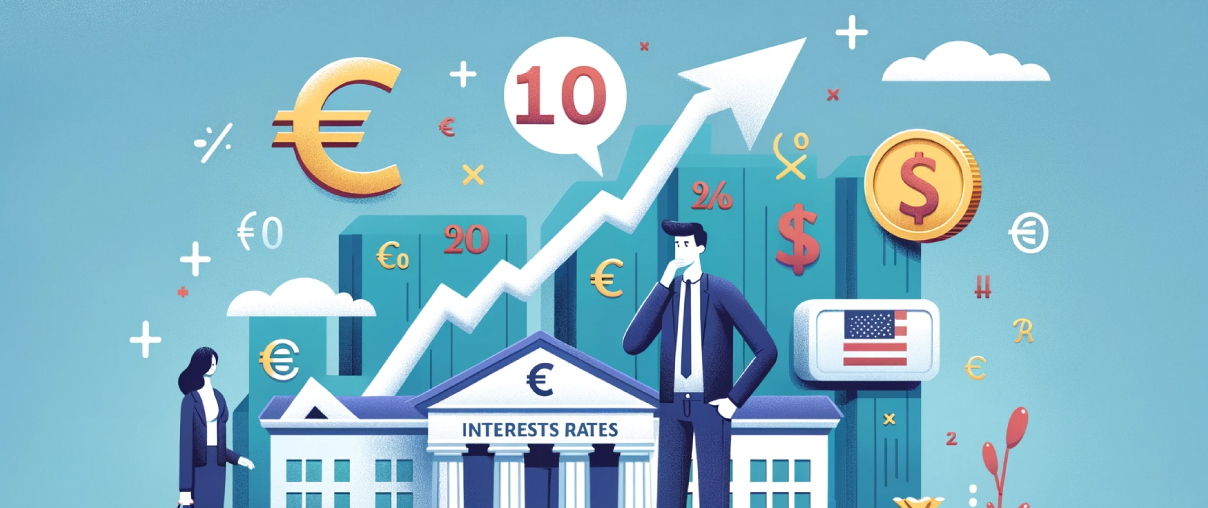What is Inflation?
Inflation is essentially the rate at which the general level of prices for goods and services rises. Imagine you could buy a loaf of bread for $1 last year, but this year, the same bread costs $1.10. The increase in price is a simple example of inflation. In other words, as inflation rises, every dollar you own buys a slightly smaller percentage of a good or service.
Inflation is Additive
- Cumulative Nature: Inflation tends to be a cumulative process. This means that the increase in prices generally adds up over time, rather than resetting or reverting back to previous levels. For example, if the inflation rate is 2% per year, a product costing $100 this year would cost $102 the next year, and so on, each year adding on top of the last.
- Compound Effect: Just like compound interest, inflation compounds over time. This means that the price increases build upon each other. In a long-term perspective, this effect can be substantial, causing prices to increase significantly over decades.
How Does Inflation Affect Consumers?
For consumers, inflation means the purchasing power of their money decreases. If your income doesn’t increase at the same rate as inflation, you’ll find that you can afford less than before. This situation can strain budgets, especially for essentials like food, housing, and healthcare. Inflation also affects savings; money saved today might be worth less in the future if inflation is high.
Central Banks and Inflation
Central banks, like the Federal Reserve in the U.S. or the European Central Bank (ECB) in Europe, play a crucial role in managing inflation. Their primary tool is adjusting interest rates. When inflation is high, central banks may increase interest rates, making borrowing more expensive. This action can slow down spending and investment, reducing the demand for goods and services, and eventually, slowing down inflation.
Inflation and Exchange Rates: EUR to USD Example
Exchange rates are affected by inflation. When a country experiences higher inflation compared to others, its currency value tends to decrease relative to other currencies. Let’s consider the Euro (EUR) and the U.S. Dollar (USD). If inflation in the Eurozone is higher than in the U.S., the value of the Euro may decrease compared to the Dollar. This change means that it will take more Euros to buy the same amount of U.S. Dollars. Conversely, if inflation is higher in the U.S., the Dollar might weaken against the Euro.
The Interrelation
- Scenario 1: Country A has higher inflation than Country B. As a result, Country A’s currency is likely to depreciate against Country B’s currency.
- Scenario 2: To combat high inflation, Country A’s central bank raises interest rates. This makes borrowing more expensive, potentially slowing economic activity and reducing inflation.
- Scenario 3: The higher interest rates in Country A now make it more attractive to foreign investors. They exchange their currency for Country A’s currency to invest there, increasing the demand for Country A’s currency and causing it to appreciate.
Example: EUR and USD
Consider the Euro (EUR) and the U.S. Dollar (USD). If the Eurozone has higher inflation than the U.S., the Euro may weaken against the Dollar. If the European Central Bank raises interest rates to combat this inflation, it might initially attract investment into the Eurozone, strengthening the Euro. However, this could also slow down the Eurozone’s economy, which in turn might impact the Euro’s strength.
Understanding these dynamics is key to grasping international finance and economics. The interplay between inflation, interest rates, and exchange rates is a delicate balance that central banks navigate to maintain economic stability.
In summary, inflation is a complex economic phenomenon that impacts consumers, central banks, and international currency markets. Understanding its dynamics, especially in the context of major currencies like the Euro and the U.S. Dollar, is essential in today’s interconnected global economy.

